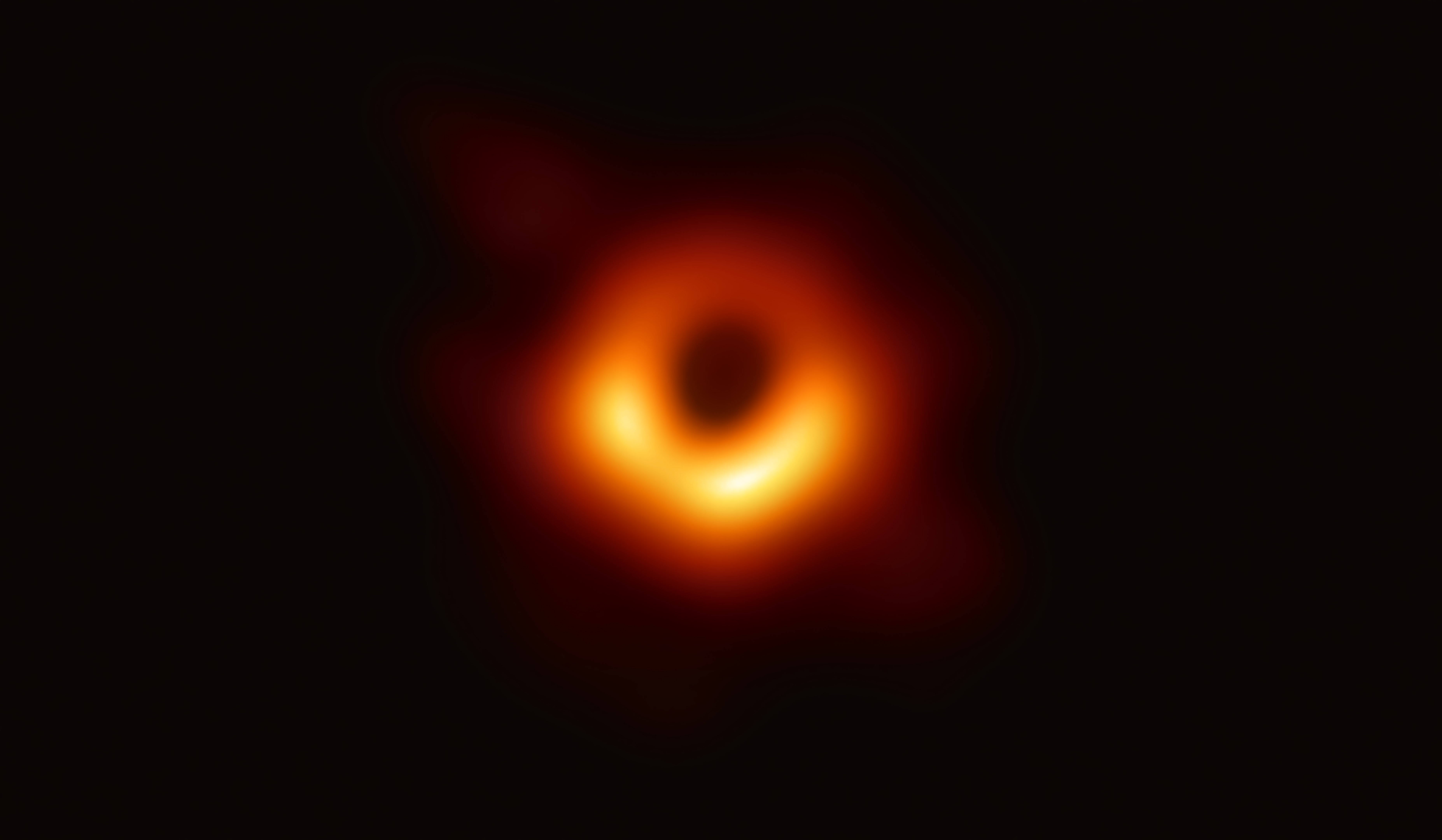The Breakthrough Prize Foundation and its founding sponsors (Sergey Brin, Priscilla Chan and Mark Zuckerberg, Ma Huateng, Yuri and Julia Milner, and Anne Wojcicki ) announced on September 5th that the Event Horizon Telescope Collaboration will receive the 2020 Breakthrough Prize in Fundamental Physics, in recognition of the first image of a black hole in the galaxy Messier 87 (see Fig. 1). The $3 million prize will be split equally among all coauthors of the related scientific publications.
As a collective, this year’s Breakthrough Prize laureates probed the galaxies to capture the first image of a black hole. The jury has found remarkable the achievements by combining telescope after synchronizing them with atomic clocks, producing a virtual telescope as large as the Earth, to obtain unprecedented resolution. The image of the supermassive black hole at the center of the Messier 87 galaxy was obtained after painstakingly analyzing the data with novel algorithms and techniques, and reveals a bright ring marking the point where light orbits the black hole, surrounding a dark region where light cannot escape the black hole's gravitational pull. The black hole shadow matched the expectations of Einstein’s theory of General Relativity.
"The effort of over twenty years of preparation has born fruit in the first image of a black hole, a result of a large collaboration with many astronomers giving their best. We are delighted that our collective effort will be awarded the prestigious Breakthrough Prize. It is a wonderful recognition of patient and thorough work of a great team.", says Anton Zensus, Chair of the EHT Collaboration Board and Director at the Max Planck Institut für Radioastronomie.
Collaboration Director Shep Doeleman of the Harvard-Smithsonian Center for Astrophysics, who will accept the prize on behalf of the collaboration at the ceremony on Nov 3, 2019, says: "We set out to see the unseeable, and we needed to build a telescope as large as the Earth to do it. It sounds like science fiction, but we assembled an incredible global team of experts and used the most advanced radio telescopes on the planet to make it a reality. This breakthrough prize celebrates a new beginning in our study of black holes."
The satisfaction over the collaboration is extraordinary, and its members were surprised by the impact of the news. The fact that such a scientific award is granted to a collective of 347 individuals has spread the joy over the whole planet, where the large team of scientists working together in uncountable teleconferences and face-to-face intense meetings is embarked on the analysis of further findings from the EHT observations in 2017 and 2018, and planning the observations for 2020. "We are really encouraged by receiving such a wonderful award. This prize can be a great driving force for making further advances in our study.", says Fumie Tazaki, from National Astronomical Observatory of Japan.
Kotaro Moriyama from MIT Haystack Observatory, is excited for the coming work: "Now, the Event Horizon Telescope Collaboration is working on constructing a similar image of the supermassive black hole nearest to Earth, Sagittarius A* at the core of our own galaxy. We are working to get videos showing the time evolution of both cosmic monsters, Messier 87 and our Galactic Centre."
Fig. 1: The first direct visual evidence of the supermassive black hole in the centre of the galaxy Messier 87. The shadow of the black hole was revealed in observations with the Event Horizon Telescope (EHT), a planet-scale array of eight ground-based radio telescopes. This major discovery was presented in April 10, 2019, in coordinated press conferences around the world and in six publications in the Astrophysical Journal Letters. Credit: EHT Collaboration
Comments from EHT-Japan collaboration members
- Mareki Honma, Director and Professor at Mizusawa VLBI Observatory, National Astronomical Observatory of Japan, says: "It is so fantastic that the whole team is awarded the Breakthrough Prize. I am really proud of being a member of the EHT project."
- Kazuhiro Hada, from National Astronomical Observatory of Japan, says: "It is an extreme honor to receive such a great prize. I would like to share this happiness with the whole collaboration members.
Background information – The EHT Collaboration
The EHT collaboration involves more than 200 researchers from Europe, Asia, Africa, North and South America. The international collaboration is working to capture the first-ever image of a black hole by creating a virtual Earth-sized telescope. Supported by considerable international investment, the EHT links existing telescopes using novel systems — creating a fundamentally new instrument with the highest angular resolving power that has yet been achieved.
The individual telescopes involved in the EHT collaboration are at present: ALMA, APEX, the IRAM 30-meter Telescope, the IRAM NOEMA Observatory (since 2018), the James Clerk Maxwell Telescope (JCMT), the Large Millimeter Telescope (LMT), the Submillimeter Array (SMA), the Submillimeter Telescope (SMT), the South Pole Telescope (SPT) and the Greenland Telescope (GLT, since 2018).
The EHT consortium consists of 13 stakeholder institutes; the Academia Sinica Institute of Astronomy and Astrophysics, the University of Arizona, the University of Chicago, the East Asian Observatory, Goethe-Universität Frankfurt, Institut de Radioastronomie Millimétrique, Large Millimeter Telescope, Max-Planck-Institut für Radioastronomie, MIT Haystack Observatory, National Astronomical Observatory of Japan, Perimeter Institute for Theoretical Physics, Radboud University and the Smithsonian Astrophysical Observatory.
Background information – the Breakthrough Prize
For the eighth year and renown as the "Oscars of Science," the Breakthrough Prize will recognize the world’s top scientists. Each prize is $3 million and presented in the fields of Life Sciences (up to four per year), Fundamental Physics (one per year) and Mathematics (one per year). In addition, up to three New Horizons in Physics and up to three New Horizons in Mathematics Prizes are given out to junior researchers each year. Laureates attend a live televised award ceremony designed to celebrate their achievements and inspire the next generation of scientists. As part of the ceremony schedule, they also engage in a program of lectures and discussions.
The Breakthrough Prizes are sponsored by Sergey Brin, Priscilla Chan and Mark Zuckerberg, Ma Huateng, Yuri and Julia Milner, and Anne Wojcicki. Selection Committees composed of previous Breakthrough Prize laureates in each field choose the winners. Information on Breakthrough Prize is available at breakthroughprize.org.
Links:
